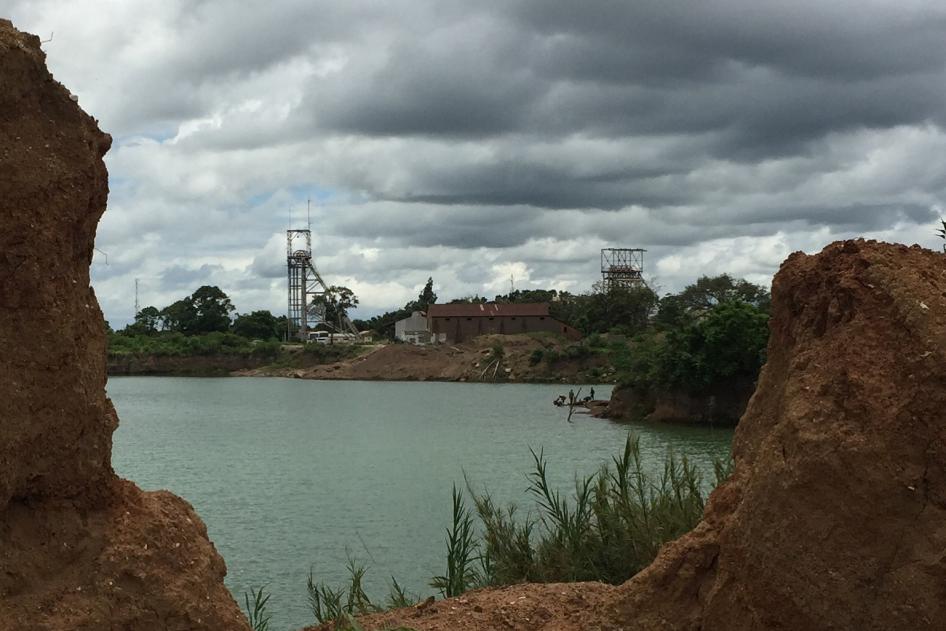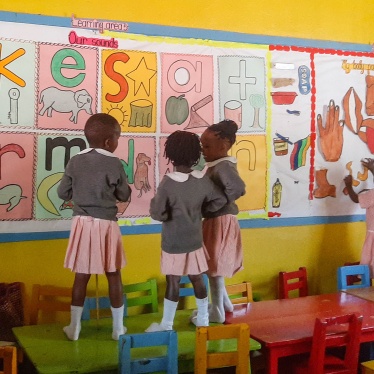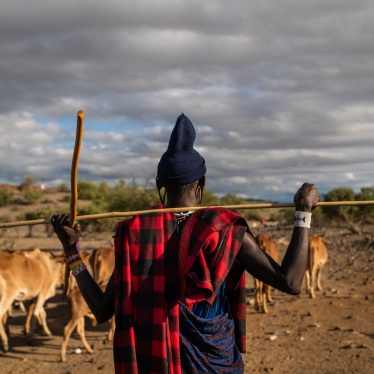(Lusaka) – The Zambian government’s statement that it intends to make Kabwe a “green city” could offer an important opportunity to address the toxic lead that has been harming residents for decades, the Alliance for a Lead-Free Kabwe, a group of Zambian and international organizations, said today. Zambia’s acting minister of green economy and environment, Elijah Muchima, announced the plan at a roundtable conference organized by the alliance in Lusaka, the capital, on March 2, 2023.
“We are heartened to hear from the Ministry of Green Economy and Environment about its plan,” said Namo Chuma, director of Environment Africa Zambia. “But Kabwe can only be considered green if the cleanup of the source of the pollution, the toxic mine, is the number one priority in the government’s plans.”
The town of Kabwe in Central Zambia is one of the worst pollution hotspots in the world because of contamination from a former lead and zinc mine. The mine began operating during the British colonial period, was later nationalized, and was closed in 1994. But the mine’s toxic waste was never cleaned up.
As a result, lead dust from its large uncovered waste dumps blows over to nearby residential areas such as Chowa, Kasanda, and Makululu, putting up to 200,000 people’s health at risk. Medical researchers estimate that over 95 percent of children living near the former mine have elevated blood lead levels. They also say that about half of them have blood lead levels so high that they require urgent medical intervention.
The Ministry of Green Economy and Environment has stated that “developments in the Green Kabwe city must proceed on top of buried lead surfaces.” The term “buried” suggests that the government would cover the mine’s waste piles in such a way that they don’t further contaminate the environment, a method sometimes described as “capping.” This method has been successfully used in a comparable lead and zinc mine in the United States and elsewhere. The capping process should be part of a comprehensive plan to provide a remedy, adhere to remediation standards, and include ongoing monitoring, the Alliance for a Lead-Free Kabwe said.
In March 2022, President Hakainde Hichilema requested the Ministry of Green Economy and Environment to establish a technical committee to “address and lead the process of comprehensive remediation” in Kabwe. However, the technical committee only had one meeting, on June 3, 2022, which was attended by representatives from government agencies, the University of Zambia, and civil society organizations. Since then, a subcommittee has been working on the committee’s terms of reference. The process of finalizing the terms of reference has been slow, and the committee’s terms of reference have not been made public.
“After a year of inaction, the government’s technical committee should promptly start working on a concrete and feasible plan for the comprehensive cleanup of Kabwe mine waste,” said Juliane Kippenberg, associate children’s rights director at Human Rights Watch. “The government should ensure that the committee shares its terms of reference with civil society groups for input, publishes the final terms of reference, and conducts consultations with international and Zambian experts on mine remediation.”
The roundtable conference in Lusaka brought together government officials, members of parliament, remediation experts, international donors, civil society groups, youths, and members of affected communities in Kabwe. The parliament member for Kabwe Central, Chrizoster Phiri, appealed to government to find a “lasting solution” to the toxic legacy in Kabwe. 18-year-old Natalie Chilikwela from Kabwe, speaking on behalf of a youth group, said, “We are done talking … we want to see action.”
Lead is a toxic metal with no safe level of exposure. It causes stunted growth, memory loss, developmental delays, and many other irreversible health effects. It can also cause coma and death. Children are especially at risk. According to the World Health Organization (WHO), lead is one of ten chemicals representing a major public health concern.
A Human Rights Watch report on the Kabwe case has illustrated the harmful impacts of lead contamination on children’s rights to health, information, and education. The Zambia Mining and Environmental Remediation and Improvement Project (ZMERIP), a government program, is providing some lead testing and treatment for children, as well as cleanup measures, but has not included a cleanup of the source of the lead, the mine waste.
“The children of Kabwe deserve a swift and lasting solution that allows them to live in a healthy environment,” said Josphat Njobvu, director of Advocacy for Child Justice. “The government now needs to put its words into practice.”
The signatories:
Advocacy for Child Justice
Caritas Zambia
Centre for Environment Justice
Child Lifeline Zambia
Children’s Environmental Health Foundation
Chitambo Development Foundation (CHDF)
Conservation Advocates Zambia
Conservation Lower Zambezi
Environment Africa Zambia
Human Rights Watch
Keepers Zambia Foundation
Media Network on Child Rights and Development
Mizu Eco-Care
Paralegal Alliance Network
People’s Action for Accountability and Good Governance in Zambia
Plant A Million Zambia
Rising Fountains Development Program
Save Environment and People Agency Zambia
terre des hommes Southern Africa
Transparency International Zambia
Zambia Governance Foundation
Zambia National Education Coalition
Zambia National Women’s Lobby








